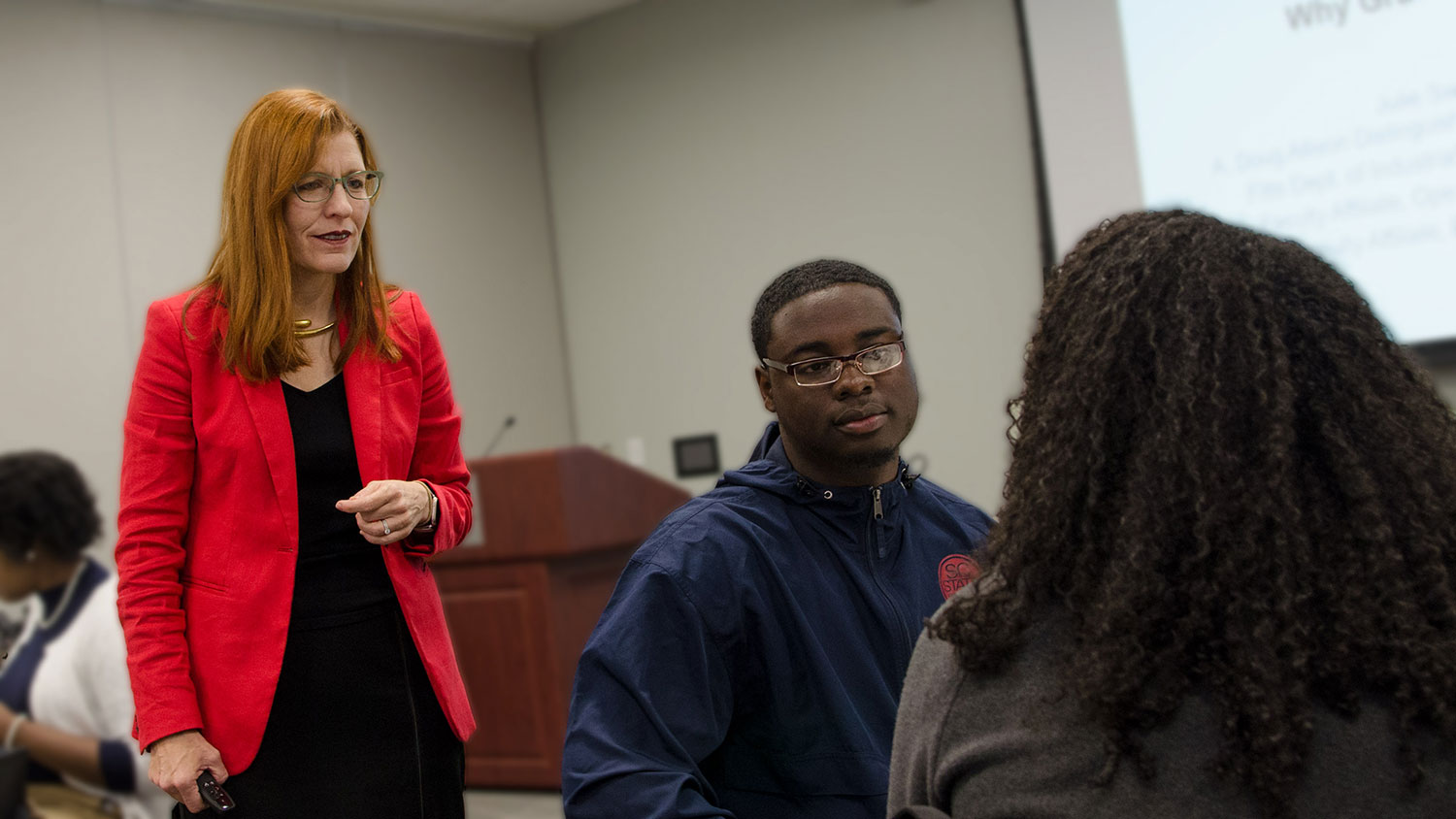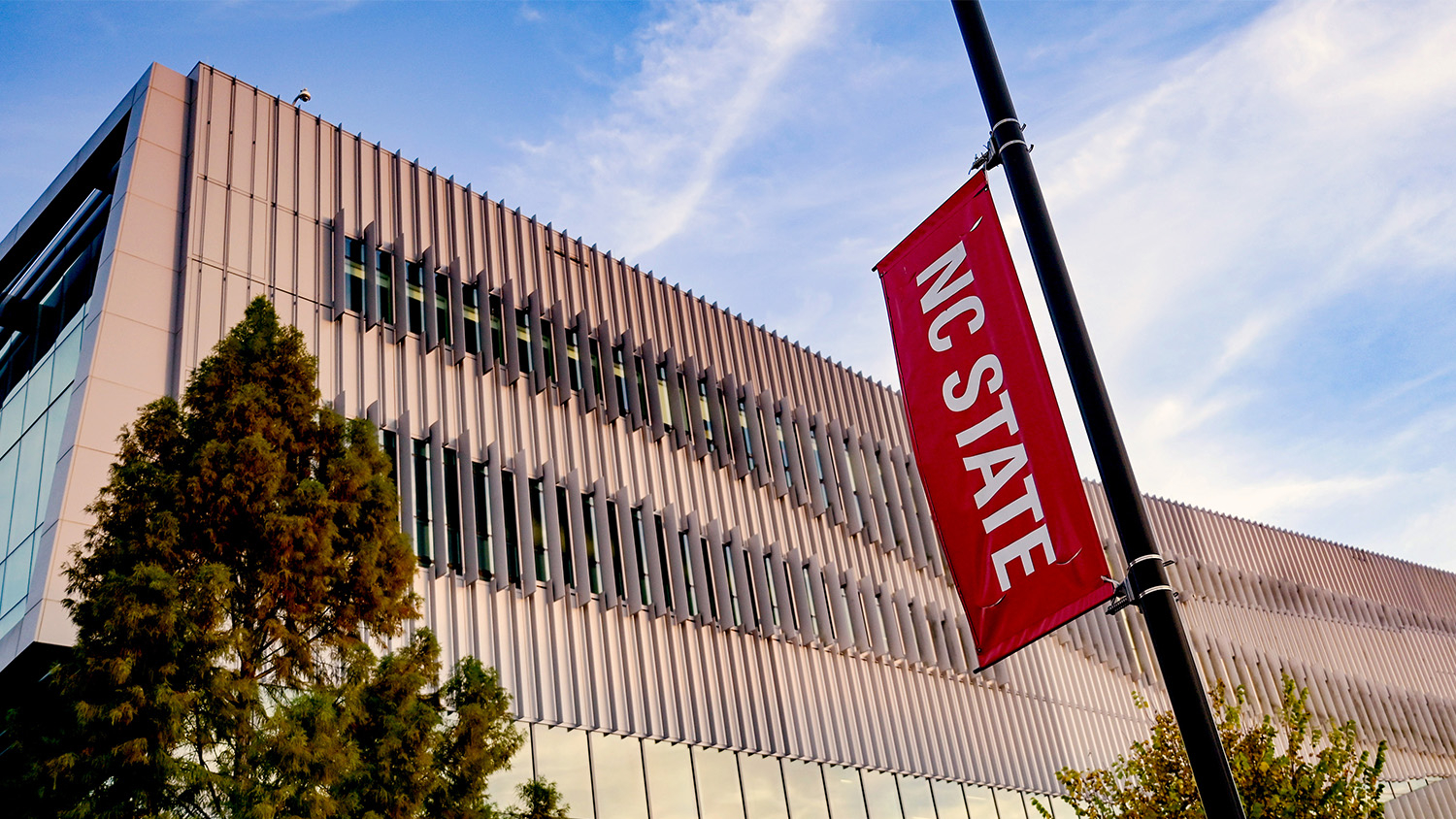Major impact

The College has made important strides in recruiting outstanding women faculty
 In the last 10-plus years, hiring and retaining the best women faculty members and enabling their success has been a major priority for the College.
In the last 10-plus years, hiring and retaining the best women faculty members and enabling their success has been a major priority for the College.
When Dean Louis Martin-Vega joined the College in 2006, there were but a handful of women tenured or tenure-track faculty members, no women department heads and even academic departments that had no women faculty members at all.
While it was clear that the College would never be a preeminent engineering leader unless it markedly increased the number of women faculty members, this effort was also motivated by the need to gain different perspectives and viewpoints from a group that has often been underrepresented in engineering.
Currently, there are more than 61 tenured or tenure-track women faculty members in the College as well as more than 20 non-tenure track women teaching and research faculty members. They are some of the College’s most prominent teachers and researchers as well as leaders of the College’s academic departments and nationally recognized centers. They are also outstanding role models who have made a significant impact on the increase in female student enrollment that the College has been experiencing.
The College took its first step in 2006 by ensuring that women faculty members were part of the search process for new faculty hires, even if they were not part of that academic department. Dr. Christine Grant — the first African-American female faculty member hired by the College, in December 1989 — was the first person Martin-Vega asked to be part of the search committee process. She often met with faculty candidates during campus visits, providing insights to the importance of broadening participation in the faculty realm.
When Grant, who is now the associate dean for faculty advancement for the College and professor in the Department of Chemical and Biomolecular Engineering, agreed to serve as a resource for the committees, it helped solidify that hiring and enrolling more women was a high priority. Additionally, Grant has served as a leader for three grants awarded to NC State by the National Science Foundation’s (NSF) ADVANCE program — which included the NSF ADVANCE Women of Color Engineering Faculty Peer Mentoring Summits.
“It is about institutional change,” shared Grant. “Initiatives such as the NSF ADVANCE program that were supported by the dean and provost’s office were and continue to be instrumental to the College.”
Grant asserts that having a more diverse faculty available for students helps prepare them to work in a more diverse engineering setting in the future. “They can learn different perspectives, and the faculty incorporate different experiences into their interactions with the students.”
In the first year of this priority action, eight new women faculty members were hired, representing one-third of the total faculty hires that year. “It was a great start — but still well below where we needed to be,” said Martin-Vega.
Moving Toward Full Representation
Dr. Laurie Williams, Distinguished Professor and previous interim head of the Department of Computer Science (CSC) was the third female hire in the department. Since she joined the faculty in 2000, she has seen a huge change in environment and attributes that success to the efforts of Martin-Vega and to Dr. Mladen Vouk, former CSC department head.
According to 2018 American Society for Engineering Education (ASEE) figures, the department is now ranked first nationally in female tenure / tenure track faculty members among departments of computer science.
Williams, who is also the co-principal investigator of the National Security Administration Science of Security Lablet at NC State, finds that having a diverse faculty provides students with role models.
“You want the faculty to be familiar to the student population not only in appearance, but in background — students like to see someone like themselves and see where they can be in years’ time,” she said.
The women faculty members in the College are a diverse and distinguished group that includes two National Academy of Engineering members, a National Inventors Hall of Fame inductee, distinguished professors, fellows of professional societies and department heads. Dr. Veena Misra, Distinguished Professor in the Department of Electrical and Computer Engineering, is director of the Advanced Self-Powered Systems of Integrated Sensors and Technologies (ASSIST) Center, a National Science Foundation Engineering Research Center led by NC State.
Two of the College’s nine academic departments are led by women — the UNC / NC State Joint Department of Biomedical Engineering (BME) led by Dr. Nancy Allbritton, Kenan Distinguished Professor of Biomedical Engineering and Chemistry, who will leave in fall 2019 to be the dean of engineering at the University of Washington, and the Edward P. Fitts Department of Industrial and Systems Engineering (ISE) led by Dr. Julie Swann, A. Doug Allison Distinguished Professor.
[retina_image id=’23616′ align=’right’ caption=’true’]
Swann, the first woman department head in ISE, feels that recruiting, retaining and promoting women in the faculty plays a critical role in enrolling more female undergraduate and graduate students. “Making sure that women and other minorities have sufficient mentors and champions is important because their social networks may be smaller in a STEM field,” Swann said.
Dr. Morton Barlaz, Distinguished University Professor and head of the Department of Civil, Construction, and Environmental Engineering (CCEE), has made increasing faculty diversity a priority. Seven women faculty members have been hired in the 10 years in which he has led CCEE.
Barlaz said that he believes every faculty member to be a unique person with individual needs and it is important to help them navigate the early years in their career to help them succeed.
“In recruiting and retaining women faculty, I believe it’s about conveying excellence, highlighting the department, the atmosphere of the College and working with everyone individually,” Barlaz said. “Everyone has a unique situation — it could be a spouse / partner who needs assistance looking for a job, the need for the candidate to defer until they complete a post-doc, or perhaps waiting to move to NC State until a child finishes the school year. Exhibiting flexibility is important and helps set a tone.”
Measuring the Impact
The impact of the College’s efforts can be seen in current rankings and the number of female students in the College. The College ranks 18th in bachelor’s degrees, 21st in master’s degrees and 14th in Ph.D. degrees awarded to women, according to ASEE figures. The College’s fall 2019 first-year class is 30 percent female, an increase from 12 percent in 2004.
In BME, the undergraduate student body is 48 percent women and 43 percent women at the graduate level. In ISE, the fall 2019 class Ph.D. class is 50 percent women.
“We did this by encouraging women to apply who had not thought about doing it or who needed a little extra nudging or encouragement,” Swann said.
Priscille Koutouan in ISE is one of those graduate students who noticed the efforts being made by the College and department to recruit women into their programs.
“I was a part of a group that came for a visit and got to talk to some of the amazing women faculty members. I had heard of many of them before joining the department, and these brilliant researchers played a key role in me deciding on NC State for my graduate work.”
As the College continues to grow, Martin-Vega is optimistic that the number of women in the faculty will also increase. He sees no reason why half of the College’s faculty couldn’t be women.
“I think that our College and the University has been greatly enriched by the fact that we now have a much stronger representation of women on our faculty. Our College in particular is a much better college because of it,” he said. “The environment that we have for students — and in particular women students — is providing more women mentors for our students, and the work that is being done by these faculty members is extraordinary.”
Return to contents or download the Fall/Winter 2019 NC State Engineering magazine (PDF, 2.3MB).
- Categories:


